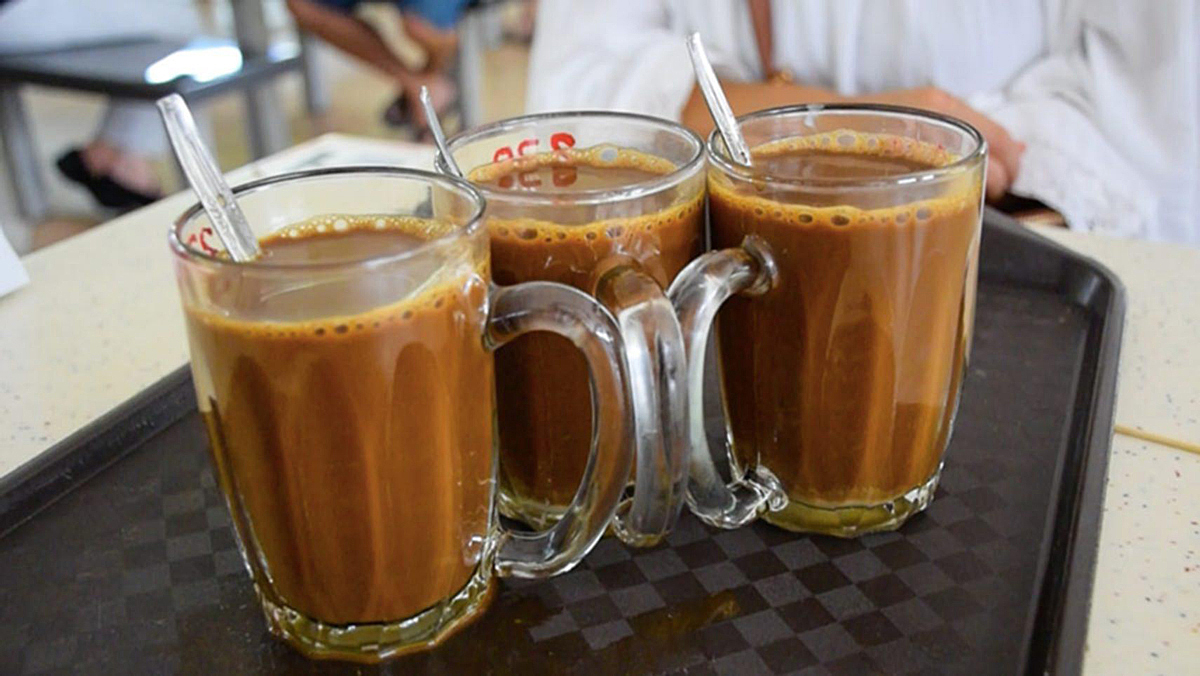liberica
-
Posted: October 09, 2019Categories: The BeanRead more »
It’s common knowledge that most of the coffee beans produced commercially come from two varieties: Arabica and Robusta. But did you know that there are actually other lesser-known varieties of coffee bean? One of them is Liberica, which accounts for less than 2% of commercially-produced coffee worldwide. In this article, we’ll tell you all you need to know about the world’s rarest type of coffee.
What’s so special about Liberica?
[caption id="attachment_7483" align="alignnone" width="1200"] A Liberica coffee bean (middle) flanked by Arabica beans. Liberica beans are larger and irregular in shape compared to Arabica beans. Photo from Fernando Medrano[/caption] Originating from Liberia in West Africa, the Liberica coffee plant produces larger, irregular-shaped cherries compared to Arabica plants. It’s said to have a floral and fruity aroma, but when made into coffee, has a full-bodied, woody taste. Those who have been lucky enough to try Liberica coffee say it tastes unlike any coffee they’ve had before. Thanks to its complex flavour profile, Liberica beans are often added to coffee blends to give it more dimension. [caption id="attachment_7486" align="alignn
A Liberica coffee bean (middle) flanked by Arabica beans. Liberica beans are larger and irregular in shape compared to Arabica beans. Photo from Fernando Medrano[/caption] Originating from Liberia in West Africa, the Liberica coffee plant produces larger, irregular-shaped cherries compared to Arabica plants. It’s said to have a floral and fruity aroma, but when made into coffee, has a full-bodied, woody taste. Those who have been lucky enough to try Liberica coffee say it tastes unlike any coffee they’ve had before. Thanks to its complex flavour profile, Liberica beans are often added to coffee blends to give it more dimension. [caption id="attachment_7486" align="alignn
-
Posted: September 25, 2019Categories: Coffee 101
-
Posted: July 03, 2019Categories: Coffee 101
-
Posted: November 07, 2018Categories: The BeanRead more »
In the Philippines, coffee is the most consumed beverage after water. A 2015 study by research firm Kantar Worldpanel found that coffee is a staple drink for Filipinos, who have shifted from being moderate to heavy coffee drinkers. This probably isn’t a surprise for those in metro Manila and other urbanised areas, which are chock-full of coffee houses ranging from big chains to boutique cafes. But the country’s coffee culture has surprisingly old roots, and some aspects of it – including the elusive and endangered form of Liberia, kapeng barako – are not well known.
Kapeng Barako: Origins
A coffee varietal that belongs to the species Coffea liberica, kapeng barako is grown in the Philippines, predominantly in the provinces of Batangas and Cavite. The term barako refers to Philippine liberica. The liberica is one of four identified species of coffee, along with robusta, excelsa and arabica. Of these, liberica has the biggest cherries and therefore, produces bigger beans. The story of barako in the Philippines dates back 200 years, when it was first planted in a place called Lipa City in Batangas. Coffee had only recently been introduced to the country by a Franciscan friar but it quickly grew into a thriving industry. Subsequently, the Philippines became a key coffee producer. In the Philippines, “barako” is a name g










